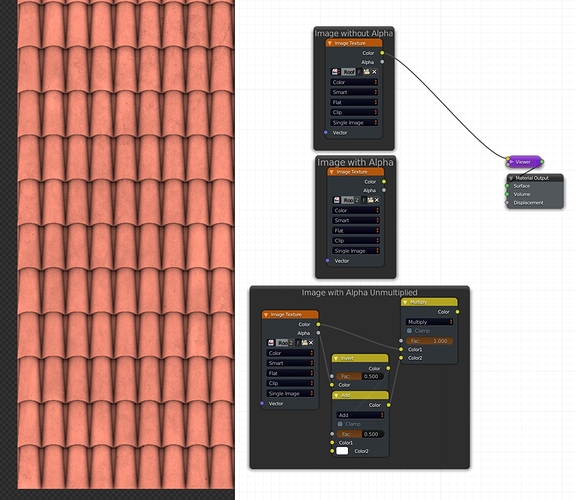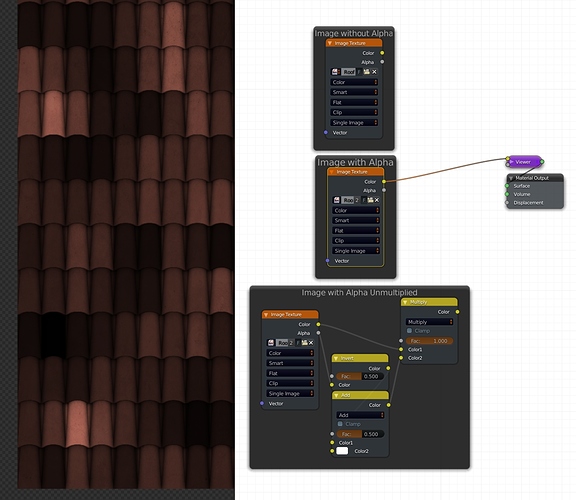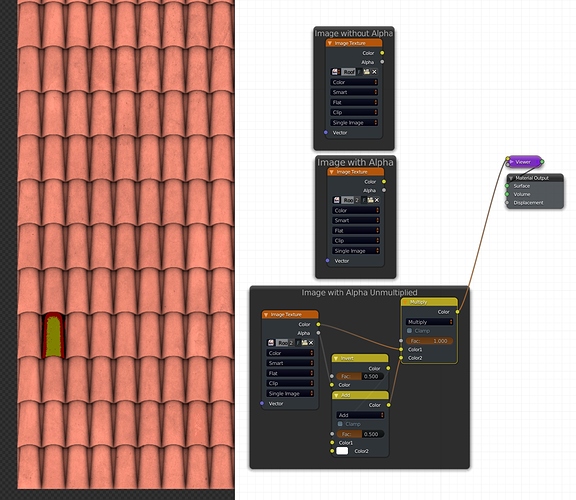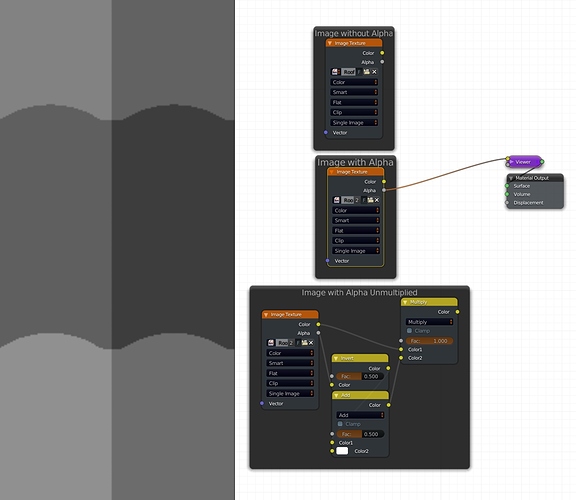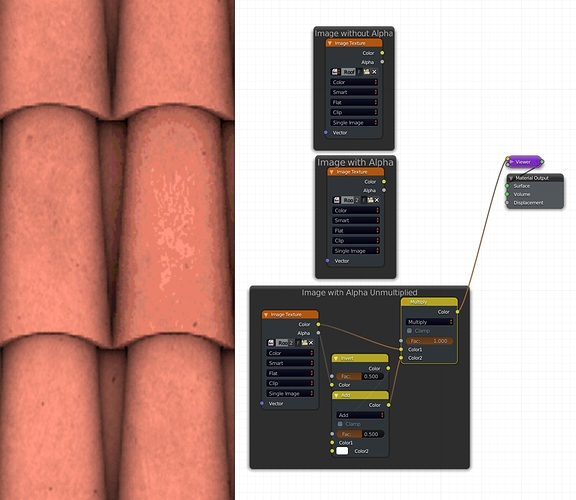Hi there,
I noticed about a year ago that when you have Alpha in an image it multiplies the Color values with it so you end up with darker RGB where the image was transparent.
This is quite odd behavior and I am wondering if it wouldn’t be better to leave it up to the user to multiply it if that is what’s necessary for some reason.
Unfortunately there is no good way to undo it… I found out you can invert alpha, add 0.5 and then multiply with that and it’s almost the same, but you lose colors significantly where alpha was darker.
Since I started using Unreal (and also GPU rendering) I was trying to minimize memory costs by all means and storing data in the alpha channel is a great way to reduce vRAM so it would be great if it’s more possible.
AFAIK this is not how it usually is, Unreal treats alpha as a completely separate channel that can be used for something else entirely.
Texture without Alpha:
Exactly the same Texture with Random per Element stored in Alpha:
Alpha itself:
Here is the workaround I mentioned above, can’t go unnoticed how mangled color dark alpha values are:
detail of “less extreme dark values” notice the color compression (gif like)
